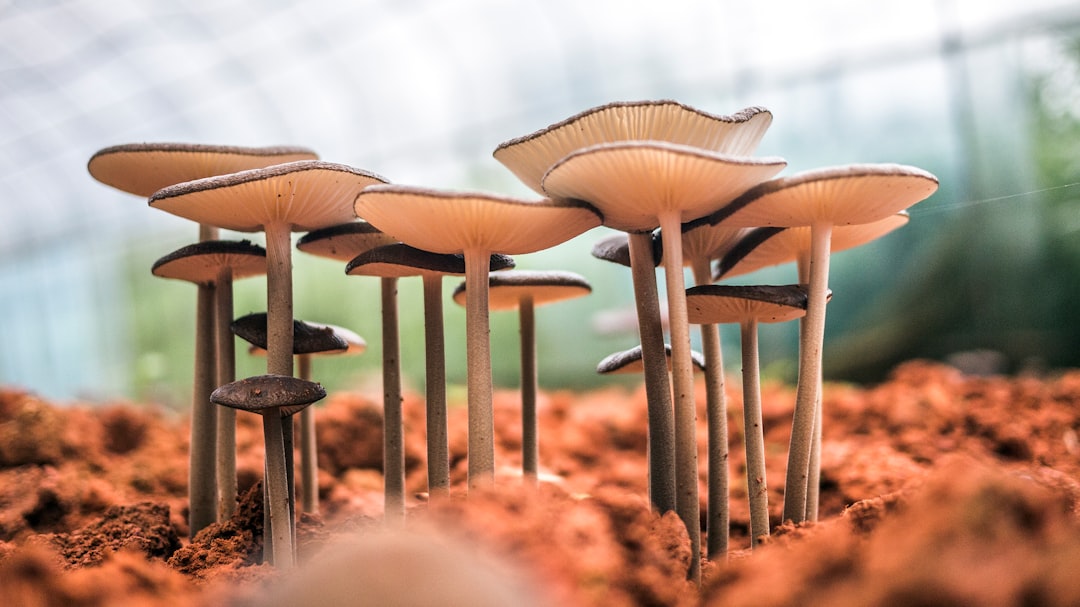All Nonfiction
- Bullying
- Books
- Academic
- Author Interviews
- Celebrity interviews
- College Articles
- College Essays
- Educator of the Year
- Heroes
- Interviews
- Memoir
- Personal Experience
- Sports
- Travel & Culture
All Opinions
- Bullying
- Current Events / Politics
- Discrimination
- Drugs / Alcohol / Smoking
- Entertainment / Celebrities
- Environment
- Love / Relationships
- Movies / Music / TV
- Pop Culture / Trends
- School / College
- Social Issues / Civics
- Spirituality / Religion
- Sports / Hobbies
All Hot Topics
- Bullying
- Community Service
- Environment
- Health
- Letters to the Editor
- Pride & Prejudice
- What Matters
- Back
Summer Guide
- Program Links
- Program Reviews
- Back
College Guide
- College Links
- College Reviews
- College Essays
- College Articles
- Back
Mushrooms can ... eat plastic?
Have you ever wondered about how to end the abundance of plastic in our world? The answer may be, shrooms…?
Plastic production continued to grow, according to industry data. So did plastic trash: 139 million metric tons in 2021, more than ever before. By 2050, we are expected to have over 25 billion metric tons of plastic waste generated. Pestalotiopsis microspora, the mushroom that eats plastic, was discovered a few years ago and may be a potential solution to this ever-growing problem that we face.
Pestalotiopsis microspora was originally discovered in 2011 by Yale students on a research field trip in the rainforests of Ecuador, and it was found to be able to use polyurethane, the main component of plastic, as its one and only carbon source in an oxygen-free environment. The ability to decompose in an anaerobic environment is very important because landfills contain millions of tons of plastic, and have scarce amounts of oxygen, especially at the bottom. Since then, many more species that have the same ability have been found. Even common, edible mushrooms like the oyster mushroom can also consume plastic.
Unfortunately, research isn’t at its full capacity yet as Dr. Joanna Sadler says, "Our study is still at a very early stage, and we need to do more to find ways to make the process more efficient and economically viable,". To be able to use these at a larger scale we require more knowledge on the speed of the process and the effectiveness of the mushrooms. However, Dr. Sadler believes that “there's potential for this to be commercially practical in the future after further improvements to the process have been made." Thankfully, Katharina Unger of Utrecht University has already started the attempt to bring this into the commercial world. Her “Fungi Mutarium '' is described as a “prototype that grows edible fungal biomass, mainly the mycelium, as a novel food product.”. The process for this is as follows, “it’s first placed in an activation chamber where UV light sterilizes the material and begins the degradation process. The plastic is then placed in the growth sphere where it sits in an egg-shaped pod made from agar (a gelatinous material used to culture samples). These pods are called FUs. The diluted mycelium is added to the FUs and slowly begins to consume the plastic, growing into a fluffy, mushroom-like substance.”. Further development is being conducted in an attempt to not only speed up the process but to check for any health concerns about eating the mushrooms after they have digested the plastic.
Think of all the ocean and wildlife affected by the millions of plastic waste we generate a year, and how the solution may have just been in front of our faces the whole time. I guess mushrooms don’t just go on pizza.
Similar Articles
JOIN THE DISCUSSION
This article has 0 comments.


I was inspired to write this piece because I love mushrooms, and after finding a niche article about this topic, I was amazed. This is a less-known topic and I hope to spread information about this awesome thing.